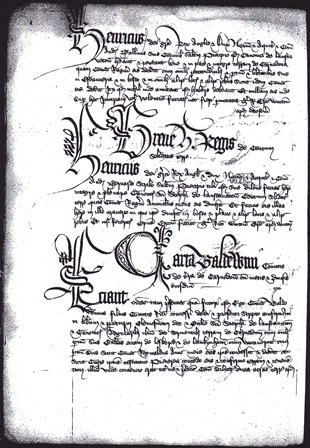|
||||||||||||||||||||||||
|
Fact checking has become a part of daily life over the last couple of decades but has always been integral to genealogical research. Once upon a time there were just two rules to follow when tracing your own family's history: Rule 1. Find the Original Evidence - Record the Source - Validate the Facts Rule 2. If in doubt refer to rule 1 Since the advent of genealogy programmes on the internet there is the need to add a third rule: Rule 3. Do not believe any published family tree unless it is supported by indisputable evidence. The arrival of the internet has enabled the simple act of copying without validation. More people do not follow the above rules than those who do; this is evidenced by the immeasurable number of incorrect family trees published on websites like Ancestry.com and Geni.com. All published trees need to be validated by serious researchers by applying the rules above. Assertions made, particularly where the narrative reinforces untrue beliefs, are repeated sufficiently often they appear to become facts. This is the most significant issue that distorts the truth and creates confusion for genuine researchers looking to develop accurate family histories. Where the evidence does not exist then assertions and assumptions should not be made unless they can be qualified with statements that explain the reasoning behind them, leaving them open to other interpretations. DNA genelaogical research is still in its infancy and as the science is refined and made more accessible to the general public, it is beginning to provide the basis for the questioning of statements that have not been validated. This is discussed further on the DNA page on this website.
Expertise
There are times, of course, where we defer to people with greater knowledge and experience. We would not be able, for instance, to be authoritative on records from Scotland, Ireland, Germany, and Italy. Whilst we don't have direct access to international records we do have some experience with records from other parts of the English speaking world. An area in which our correspondents will have greater knowledge than us is in respect of recent generations of their own families. The living and their living relatives manage their own history and memories in their everyday lives. We are generally interested here in the life events of those who have already passed on.
Collaboration Most of the many trees cited on the Families page of this website have been validated by us. The links to the trees on that page will provide the reader with a skeleton tree enabling identification of individuals. We have significantly more biographical details on our database and these can be supplied upon request by e-mail. We have collaborated with so many generous and interesting people over the years. Family members, resource managers, subject matter experts and so many people with knowledge and skills have shared information, documents and images with us. Without their assistance the development of our families' histories would be the poorer. Amongst this legion of generous folk we would like to give a special mention to the following contributions:
We have had so many contacts who have people who collaborated with us on these and other family trees. Some of them have a more extensive knowledge about their own family. This is particularly the case with some of the North Hill Families on the NHLHG website.
Transcriptions Transcripts of records are a source for errors. Every time a document is transcribed the opportunity for errors is created. We check transcribed records against the original document where possible, but of course there are instances where a transcript is the best that is on offer. For pre-20th century records a typed record is almost certainly a modern transcript and the original manuscript document is the best source. Someone, somewhere has transcribed from it and so it's likely to be still available. Some transcriptions are oviously that, transcriptions but there are some documents that would seem to be originals but aren't. The document always needs to be considered as to how it was created. Here are some examples of less obvious:
There are many more examples but our rule is to get as close to the original document as possible.
|

 Our expertise lies primarily with London and Cornish records. Ken is
Our expertise lies primarily with London and Cornish records. Ken is 